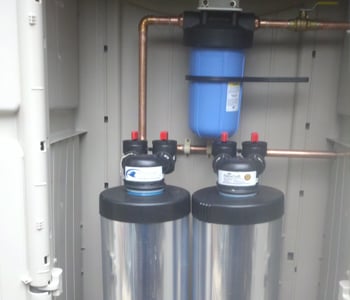While most municipalities do have relatively strict regulations when it comes to water, many contaminants will find their way into an individual’s home. Not only will these contaminants make the water less healthy for the residents, it could also do damage to water heaters, pipes, gaskets, washing machines, and dishwashers. This is why many have begun the process of exploring whole home water filtration systems, but many are still unsure of how these systems work, when they are needed, their overall costs, and how clean the water will actually become.
The Basics of a Whole Home Water Filtration System
There are a number of systems that can be used to filter water, but a filtration system designed for the entire home is going to be the most comprehensive, but not necessarily the most efficient. Unlike filtering at specific faucets or even third-party filtering such as with bottles and jugs, these are designed to filter the water well before it reaches a specific tap, faucet, or fixture. They can be attached on almost any potable water pipe, depending on the ease of access and the size of the unit, and the filter will need to be changed every few months.
Overall Costs
The base cost of these units will be determined by a number of variables including the quality of the filtration system and the specific contaminants that the homeowner is looking to remove. Most can assume a base cost of somewhere between $500 and $2,000, but some units will move into the range of $4,000 or more for high volume jobs. For those that are uncomfortable installing the system, there will be the need for plumbing costs, and these are equivalent to replacing a water heater.
How Effective Are They?
The idea of fresh and contaminant-free water is appealing, but many want to know exactly how effective these products are. This comes down to the quality of the filter, the base quality of the water itself, and how much water is going to be pushed through the systems. Each filter will vary slightly, but they are designed to remove most universal contaminants such as metals, pesticides, pathogens, calcium, and magnesium.
Choosing the right system comes down to one’s budget and the contaminants in their water supply. Conducting a thorough test of the water, narrowing down the choices to water filters that remove those contaminants, and then searching for secondary filters once the water is past the faucet is the best way to keep water healthy, potable, and contaminant-free.
